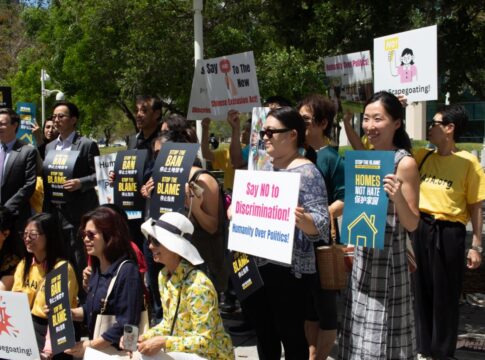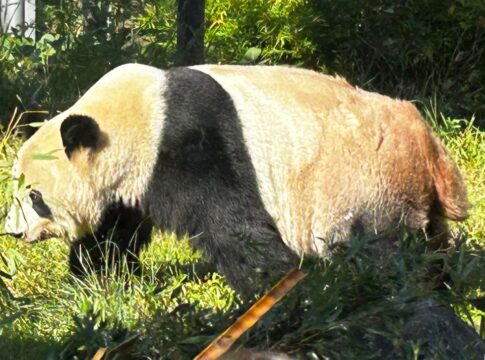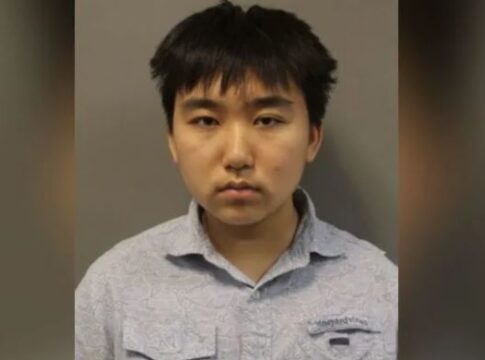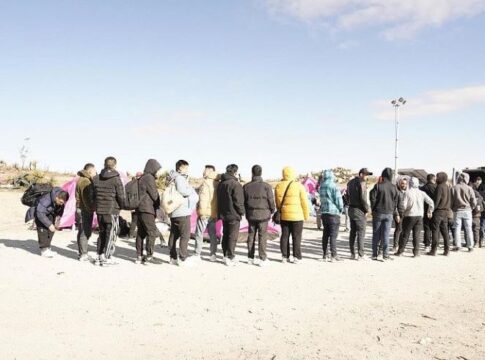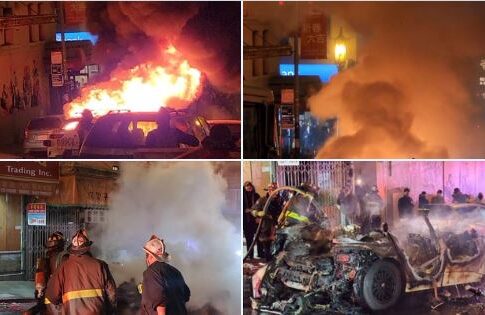(Note from the editor: The following is a question and answer with Vivian Mabuni, a mother and breast cancer survivor from California with a husband and three children. She has been on the staff of Cru (formerly Campus Crusade for Christ), with her husband Darrin, for 25 years. Her book Warrior in Pink was released by Discovery House on April 1.)
You share a lot of intimate moments of a very personal journey. How difficult was that?
My friend, Leila, set up a CaringBridge medical website early on in my cancer journey and I began to journal about the good and the hard as we walked the cancer road. I wrote about the procedures and each treatment phase, but I also wrote about the emotional, spiritual and relational challenges. So having the CaringBridge journal to draw from made for an easier transition to write about those intimate moments.
What part of this book did you struggle with the most and why?
LATEST STORIES
Having to go back and recall the harder parts of the cancer journey was emotionally taxing. I wrote with tears streaming down my face as I remembered some of the hard times and even some of the tender times I shared with my husband and family. The story of Max also proved a challenge. Grief is hard to write about.
What would motivate you to write such a book?
Several friends I respected kept encouraging me to turn my CaringBridge website into a book to help cancer patients and their families. I felt inexperienced and inadequate. but finally came to a point where I was willing. When I researched cancer books, I didn’t find a single Asian American author. Most of the books were practical how-to type books. So I set out to write a book that would explore cancer treatment and the post treatment in more of a story format. I wanted to share from our experience what we wrestled with and what we found helpful in hopes it would help others who would walk the cancer road.
You write from a Christian perspective, but I personally don’t find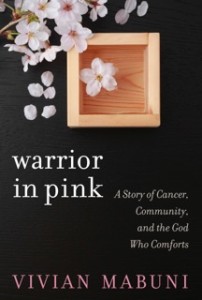 the book preachy. What will non-Christians be able to get out of this book?
the book preachy. What will non-Christians be able to get out of this book?
Thank you for noticing the tone of the book. I wrote very intentionally to not be preachy, but to share honestly what it was like for me as a Christian trying to move toward God in the midst of life being derailed. I think non-Christians will benefit from the emphasis of living life in community, of allowing people to help and learning to be a gracious receiver. I think everyone will be able to identify with the range of emotions described when we experience difficult times and hopefully the medical terms and different medical treatments will help someone newly diagnosed have a better idea what to expect.
Where does the title Warrior in Pink come from?
I think the title captured the idea of battling breast cancer. Pink, as everyone knows nowadays, is the signature color for breast cancer. Warrior is a great word for fighter. For me I found warrior especially significant as the Hebrew word used in the Old Testament to describe Eve was ezer (rhymes with razor) and is defined as strong warrior.
The editorial team at my publishing house came up with the name. They had the foresight to think about people who would be googling books about breast cancer and thought this title would help make it easier for people searching for resources to help.
How did your family feel about you writing this book? What did your kids think of the book?
My husband, Darrin, has encouraged me to write for as long as I can remember. He saw the writer in me before anyone else. My kids have all been excited throughout this book writing process. My son, Michael, told me the other day after finishing the book that he really liked it and liked my writing style. Having the support and encouragement from my family has been a tremendous blessing. Of course my parents are thrilled. They are ordering 20 books to give away to their friends.
Who or what is the Asian Martha Stewart?
I was meeting up with some women at a food court in the Irvine Spectrum mall (located in southern California). One of my friends, Elaine, shared about this woman who had a reputation in her neighborhood of being the “Asian Martha Stewart.” Everything about this woman was “together.” The clothes she wore, the clothes her children wore, her house, the food she prepared. Then this woman was diagnosed with breast cancer. My friend and others in the neighborhood reached out and offered to help her. She responded in typical Asian fashion with not wanting to burden others or rock the boat so she turned down the help of others. As she continued through her cancer treatment her body began to change and she could no longer hold her perfect world together. Tragically she ended up committing suicide. She left behind her husband and two children. When I heard this story it stopped me. I had never met this woman but could relate with her desire to be strong and self-sufficient and not put others out. After hearing her story I prayed and told God, “If anything like that ever happens to me, I purpose to let people in.” This was in October, two months before I received the phone call no one ever wants, “You have cancer.” As I look back, hearing that story and the decision I made to allow people in to help me, I think, made all the difference.
What advice would you give to others going through cancer treatments?
Well I probably wouldn’t offer unsolicited advice. I can’t tell you how many people, with the very best of intentions, sent me articles about how eating fruit grown in the Amazon would cure cancer or shark cartilage. I kept thinking to myself, “If these things (and there were MANY) really cured cancer then we wouldn’t deal with cancer anymore.” Each person’s cancer journey is unique and the treatments are tailored by the doctors based on age, type of cancer, stage of cancer, what medicines are available, etc. Now, if they asked me for advice as someone who has undergone cancer treatment I would encourage them to take the braver route of letting people in to help. I’d also advise them not be hard on themselves or the people around them. Being thrust into the world of cancer is exhausting. New medical terminology, decisions on treatment, doctors appointments, etc can be overwhelming. I wrote a post here on my website that is also in an appendix in the book that elaborates on some of these thoughts.
How do you feel being an Asian American has impacted your journey of living through breast cancer?
I think some of the cultural values instilled in me like not rocking the boat, causing others to lose face, and deferring to others, added an extra challenge when it came to battling breast cancer. I had to intentionally swim against those deeply ingrained values that were modeled to me.
Is there anything you’d like to add?
I really appreciate this opportunity to share about this book. My hope is we will see more and more Asian American authors published. Our stories and experiences are important and need to be shared. So thank you for having me and for highlighting “Warrior In Pink.”


